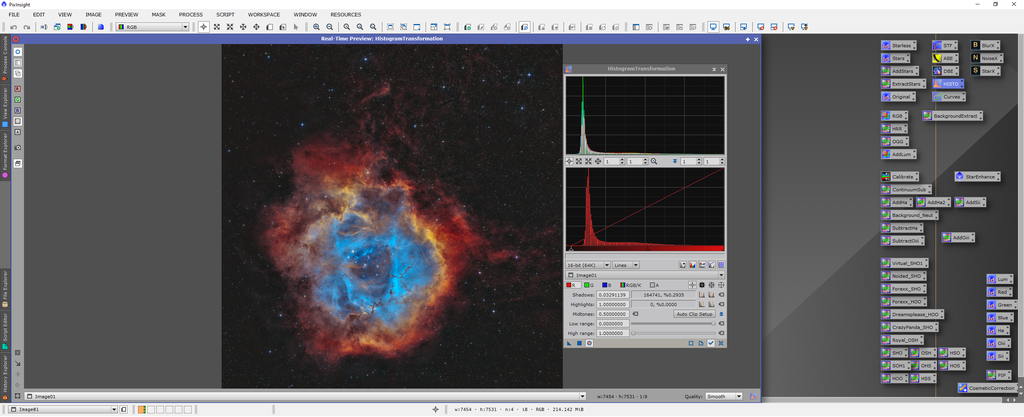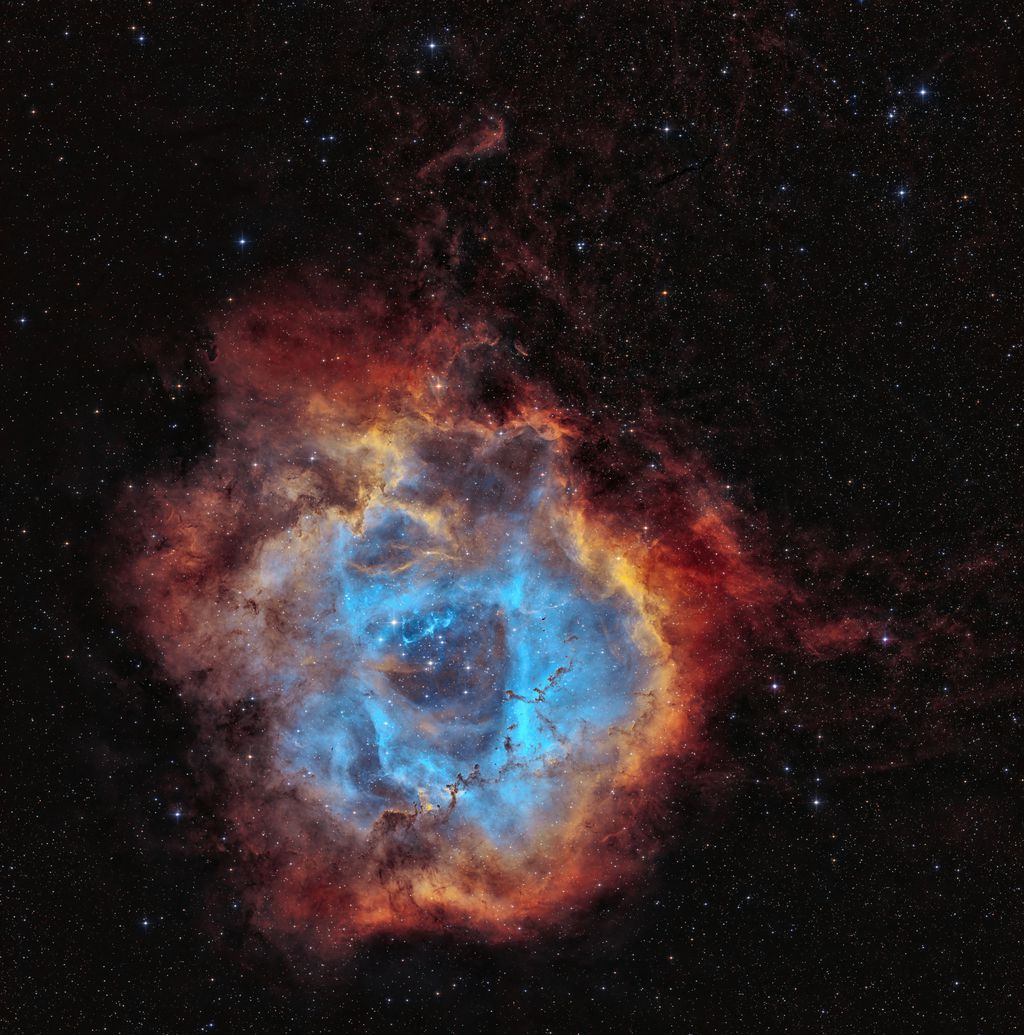Late in the season, I embarked on a project to create a 3x2 panel mosaic of the Rosette Nebula with the aim of producing a high-definition image of this magnificent object. Unfortunately, the weather did not cooperate as expected, resulting in only about 22 hours of data, equating to merely 3h40' per panel. This include 3h48' of RGB data for stars. Core equipment included a 200/800 Newtonian telescope and an ASI294mc pro camera coupled with a UV/IR cut filter for stars and an L-ultimate filter for DNB data.
You can view the picture here: https://www.astrobin.com/wabsb8/
In terms of processing the original version, I:
- Stacked each panel and, for DNB data, extracted Ha and OIII layers in SIRIL.
- In PixInsight, I assembled the RGB, Ha, and OIII layers.
- Key steps for processing the Ha and OIII data involved starnet2, gradient extraction, blurX, and linear fit.
- I assembled these layers using Pixemath with R=Ha, G= 0.7Ha+0.3OIII, and O=OIII.
- Applied light histogram transformation followed by an arcsin stretch (to preserve color), GHS, and NoisX. Subsequent steps included common cosmetic adjustments (masking, curves, local histogram, etc.). Stars were generated from the RGB stack, employing Gradient extraction, SPCC, blurX, starnet2, arcsin stretch, color saturation, curves, and unsharp masking.
I am looking for to suggestions for further for the version labeled "original".
Secondly, upon further consideration, I uploaded a version of the DNB data that I stacked and stitched to verify if my imaging plan was yielding stitchable panels. In this version, DNB data were stacked using the OSC script (without layer extraction) and the panels were quickly assembled. However, it consists of only 98 frames of 300 seconds each and lacks RGB stars. While this version is more rudimentary, I find myself drawn to its classical look alongside the first version.
Here's my second query: How do you perceive the colors of this second version (labeled "B") compared to the classical one? I may decide to develop a full version of it in the future.Thank you for your insights
Clear skies,
Patrice






